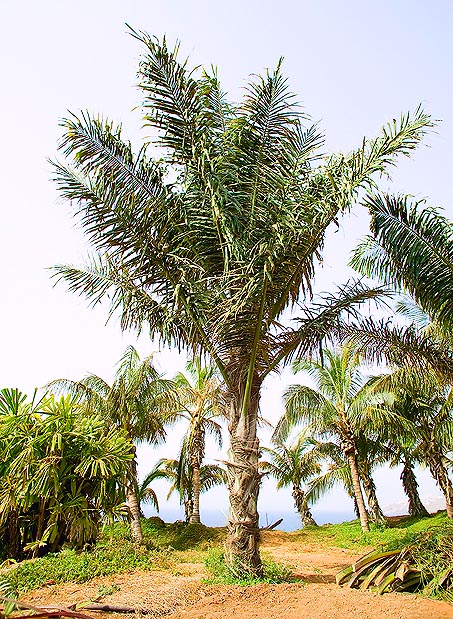Family : Arecaceae

Text © Pietro Puccio

English translation by Mario Beltramini

Of big ornamental value, but monocharpic © Giuseppe Mazza
The name of the genus, Arenga, comes from the Malaysian “areng”, referred to the Arenga pinnata. The species is honoured to its collector, the Dutch botanist J.B. Westerhout.
The plant is known in the English-speaking countries with the name “westerhout’s sugar palm”.
Palm with solitary trunk, tall up to about 12 m and diameter around 40 cm, covered by the persistent bases of the leaves and by blackish fibres, the leaves are erect, tall up to 8 m, with linear leaflets long up to about 70 cm, irregularly indented at the tip, and inserted regularly on the rachis on a plane. The colour is dark green on the upper side, and pale grey on the lower one. Monoecious and monocharpic plant (it dies after the fructification, which lasts some years), it produces hanging inflorescences, ramified, about 0,5 m long. The fruits are globose, 4-5 cm of diameter, of blackish colour when ripe, usually containing 3 seeds. These germinate in 2-3 months with bottom heat.
It is a palm with a remarkable ornamental value, suitable for spacious gardens in tropical and subtropical climate, both in full sun and in partial shade. It has not particular exigencies for the soil, provided it is kept humid. Its resistance to low temperatures is not well known, being till now not much cultivated outside its original areas, it seems, however, that it does not bear, if not for very short periods, temperatures around the zero.
Synonyms: Saguerus westerhoutii (Griff.) H.Wendl. & Drude (1878).
→ For general notions about ARECACEAE please click here.
